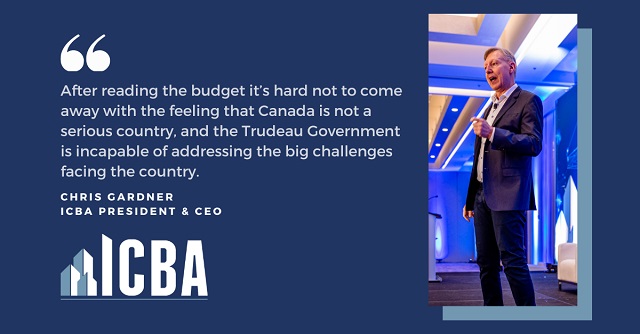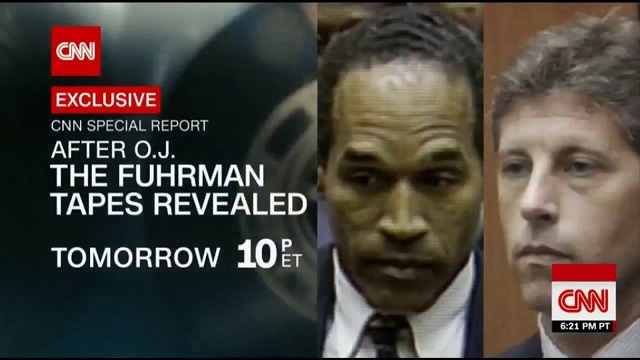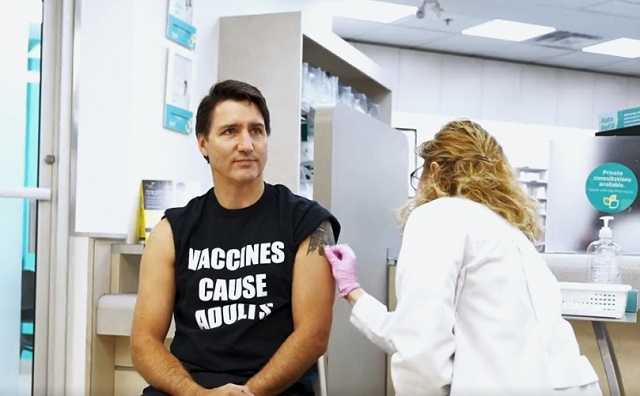Brownstone Institute
Who Ultimately Wins in a Society of Flash Mob Moralists?

From the Brownstone Institute
BY
A big story in the hockey world in recent days centers on the Boston Bruins’ decision to offer, and then rescind, a contract to promising 20-year-old defenseman Matthew Miller.
Miller was drafted in the 4th round of the 2020 NHL draft by the Arizona Coyotes, who subsequently renounced their rights to the player when two journalists from the Arizona Republic reported the player had been convicted at age 14 in an Ohio juvenile court of serially abusing a developmentally disabled fellow student of color.
As a result of the same stories, apparently spurred by testimony given by the victim and his family, Miller was stripped of his hockey scholarship at the University of North Dakota.
Two years later, after talking with Miller and his agent the Bruins management decided that Miller was worthy of a second chance.
However, after a fierce media/social media storm ensued—in the midst of which NHL commissioner Gary Bettman announced that he would have the last word on deciding who would be eligible to play in the NHL—the Bruins rescinded the recently signed contract, saying they had discovered unspecified “new information” about Miller in recent days.
And thus ended yet another of our era’s online morality plays, dramas wherein the social capital of personal aggrievement, magnified by the vicarious expressions of outrage emanating from largely anonymous online mobs, invariably rules the day.
I’ve got nothing against morally-infused personal outrage. Indeed, I’ve got plenty of it. Moreover, I am well aware of the role it has played in regulating behavior in social collectives throughout history.
But I also know that one of the things that made the emergence of modern democracies possible was the subordination of mob-style moral outrage, and its twin brother personal vengeance, to the rule of law.
Is the application of the law often imperfect? Absolutely. Does the restitution it offers, when it indeed does offer restitution at all, almost always fall well short of what the victims of the injustice believe is owed to them? No doubt.
The founders of our institutions were not unaware of these limitations. But they believed that flawed justice such as this was infinitely superior to the alternative, which they correctly understood to be a society “regulated” by some mixture or another of personal vendettas and mob rule.
I have read the news reports about what Matthew Miller did to Isaiah Meyer-Crothers during the course of what is said to be several years of bullying, allegedly starting when both were 7 years old. The incident most commonly adduced by the press to exemplify this sad period of harassment—Miller’s getting Meyer-Crothers to lick a push-pop that had been dipped in urine—is repellent beyond belief. And I know that if I were Isaiah and/or his family I’d have a very hard time ever forgiving him for these aggressions and for the way it no doubt damaged the disabled youngster’s psychological well-being.
But does it mean that Miller, himself a probable victim of some sort of abuse or neglect to engage in such sadism at such a young age, has to be a social pariah for life, unable to exercise his skills in the workplace? This, when a veritable host of professional athletes who have done far worse things as adults (e.g. Ray Lewis, Craig MacTavish) have been breezily pardoned and welcomed back into the playing and/or management ranks. Apparently it’s much easier to go after a 20-year-old kid than an established star whose jersey you bought for yourself or your kids.
To pose the above question is not, as so many eager and zealous moralists in the comments section of the oh-so-liberal Boston Globe sports section and other places would have us believe, the same as “excusing what Miller did” or being in any way heedless of the serious damage that his childhood/adolescent actions had on Meyer-Crothers. Nor does it imply that Matthew Miller’s transgressions were just a case of “boys being boys” or that you believe he has been reborn as a moral angel.
As is usually the case, things are far more complex than that.
It is my understanding that Matthew Miller was remitted to the existing system of juvenile justice, did whatever putatively proportional penance was levied on him by the system, discharged, and allowed to get on with his life.
And in keeping with the fundamental precepts of juvenile justice, rooted in the belief that no one should be condemned in perpetuity for acts committed before the onset of full adult moral reasoning, the records were sealed. And as far as I’ve been able to tell, he has not been remitted to the justice system since that time.
When he was drafted in 2020, someone, however, violated the spirit of this principle and brought up Miller’s juvenile transgressions and contacted the victim who expressed his dismay at the possibility that Miller might be afforded the possibility of going on to a life of wealth and fame. “Everyone thinks he’s so cool that he gets to go to the NHL, but I don’t see how anyone can be cool when you pick on someone and bully someone your entire life.”
This is a perfectly understandable sentiment, one that is expressed a lot more tamely than what I might have said were I in his same position.
However, the bigger question is if, in a supposed society of laws, these more than legitimate feelings about seeing your one-time tormentor experience recognition and the possibility for success can and should be used as a means of imposing—through media-social media-business collusion—a de facto form of double jeopardy on someone who has theoretically paid his debt to society?
Do we really want to live in a society where, if you can recruit a posse of infuriated and media-savvy moralists you can supersede not only the intended effects of the law, but perhaps more importantly in the long run, the possibilities of healing in both the aggressor and his victim? Do we really want to effectively lock two young people into the tormentor-victim dynamic for the rest of their lives?
According to this logic, prison education programs like the one I taught in for many years, and where I experienced the most vibrant and meaningful classroom interactions of my teaching career, should not exist.
Rather as someone conscious of some of the heinous things that my would-be students had done, I should, according to the logic at play in the Miller case, have haughtily rebuffed my colleagues when they asked me to join the effort, telling them in no uncertain terms that “I don’t in any way wish to support or dignify ‘animals’ such as these.”
I would then proudly tell everyone that would listen about how I had strongly enunciated and defended my clear and unbending moral principles in the face of requests to glorify criminals and their crimes.
Again, is this really a model of moral comportment that we want to advance and normalize?
Sadly, the answer of many—apparently secure in the belief that their immaculate children could never, ever be agents of evil—to this question appears to be “yes.”
Indeed, wasn’t it a simple variation of this dynamic of stigmatize, dehumanize and shun—rooted in the idea that evil is always pure and located elsewhere—that psychologically underwrote the worst repressions of the High Covid era?
As bad as this practice of eschewing the prospect of healing in favor of preening self-regard and continued aggrieved tension is, it may not even be the worst part of the new trend toward widespread armchair moralizing.
Arguably more troubling is the damage such practices do to what might be called our society’s “economy of concern.” Like most everything about us, our ability to pay attention to the world outside our heads is limited. The kingpins of the new cyber economy know this, and are laser-focused on getting us to give as much of this scarce and extremely valuable resource to them during the course of our days.
They do so most obviously to sell us things we often don’t need or intrinsically want. But they also do so to keep us from thinking about how the social structures they have a huge say in shaping do or do not serve our long-term interests.
How?
By encouraging us to spend cognitive, emotional and moral energies on people and things that ultimately lie well beyond our own radius of personal control.
Like, for example, on young hockey players who made ugly mistakes as a child and early adolescent or, conversely, on the truly heart-wrenching stories of his victim.
Will fulminating online about the young hockey player’s past really solve any of our real problems?
Obviously not.
But it will take energy away from addressing big and structurally-imposed violations of basic rights happening today.
Every minute spent talking today about a single child-on-child abuse case legally resolved, however imperfectly, 6 years ago is a minute not spent addressing the cruelties and injustices of government-on-child abuse taking place today, much of it on the name of “fighting Covid.” outrages eloquently and passionately denounced here by Laura Rosen Cohen .
In effect, when we allow ourselves to be swept up into object-free campaigns of moral virtue-signaling about past personal cases, we are giving those in big entrenched centers of power much more space to enact and consolidate enveloping systems of citizen abuse and social control. And if you think these entrenched centers of power are beyond thinking of how to stimulate diversionary campaigns of small-bore outrage, then it’s time you wake up to the new realities of our world.
A half-century ago, certain activists declared that now “The personal is the political.” It was an alluring soundbite and like so many alluring soundbites overly simplistic. Should we strive to always inject the personal concerns of the citizenry into policy-making discussions? Of course.
That said, there is, and must always be, as Hannah Arendt reminded us, a barrier between our private and public selves as well as an acceptance, as excruciatingly difficult as it might be to do, of the unfortunate role of unrequited tragedy in the lives of us all.
Do I wish that the pain of Meyer-Crothers could have been eliminated by Ohio’s system of juvenile justice? I obviously do. But sadly, that’s not how it works. A public justice system is not designed to eliminate pain, but rather attenuate its onward march, and in this way, provide a possible opening for healing.
The internet has, for better or worse, created new forms of social organization and political mobilization. As we have seen in the Miller case, the Meyer-Crothers family, backed by journalists and online activists, has sought, in effect, to gain a measure of the moral payback the justice system was unable to provide them.
Is it understandable? Yes. Is it their right? Certainly.
Is using these new methods of mobilization to effectively override the legal system and create what are effectively vigilante forms of retribution good for the future of our society and culture?
Probably not.
While it may make a lot of people feel good about themselves at the moment, it will only further corrode trust in the rule of law— a shift that always favors the powerful—and take valuable energy away from the urgent task of fighting massive and systematic government and corporate assaults on our dignity and freedom.
Brownstone Institute
Deborah Birx Gets Her Close-Up

From the Brownstone Institute
BY
According to Birx, she intentionally buried the more draconian elements of the lockdowns in text at the end of long documents, theorizing (correctly apparently) that most reporters or readers would just “skim” the document and would not focus on how extreme and unprecedented these mandates actually were.
Most Americans will remember Dr. Deborah Birx as the “scarf lady” who served on the White House’s Covid Response Team beginning in February 2020.
According to a recently-released (but little-seen) 24-minute mini-documentary, it was Birx – even more so than Anthony Fauci – who was responsible for government “guidelines,” almost all of which proved to be unnecessary and disastrous for the country.
According to the documentary, the guidelines ran counter to President Trump’s initial comments on Covid, but ultimately “toppled the White House (and Trump) without a shot being fired.”
The mini-documentary (“It Wasn’t Fauci: How the Deep State Really Played Trump”) was produced by Good Kid Productions. Not surprisingly, the scathing 24-minute video has received relatively few views on YouTube (only 46,500 since it was published 40 days ago on Feb. 26).
I learned of the documentary from a colleague at Brownstone Institute, who added his opinion that “Birx (is) far more culpable than Fauci in the Covid disaster…Well worth the time to see the damage an utter non-scientist, CIA-connected, bureaucrat can do to make sure things are maximally bad.”
I agree; the significant role played by Birx in the catastrophic national response to Covid has not received nearly enough attention.
Brought in from out of Nowhere…
From the video presentation, viewers learn that Birx was added to the White House’s Coronavirus Task Force as its coordinator in latter February 2020.
Birx worked closely with Task Force chairman Vice President Mike Pence, a man one suspects will not be treated well by future historians.
According to the documentary, “career bureaucrats” like Birx somehow seized control of the executive branch of government and were able to issue orders to mayors and governors which effectively “shut down the country.”
These bureaucrats were often incompetent in their prior jobs as was Birx, who’d previously served as a scientist (ha!) in the Army before leading the government’s effort to “fight AIDS in Africa” (via the PEPFAR Program).
When Birx was installed as coordinator of Covid Response she simply rehashed her own playbook for fighting AIDS in Africa, say the filmmakers.
The three tenets of this response were:
- “Treat every case of this virus as a killer.”
- “Focus on children,” who, the public was told, were being infected and hospitalized in large numbers and were a main conduit for spreading the virus.
- “Get to zero cases as soon as possible.” (The “Zero Covid” goal).
The documentary primarily uses quotes from Scott Atlas, the White House Task Force’s one skeptic, to show that all three tenets were false.
Argued Atlas: Covid was not a killer – or a genuine mortality risk – to “99.95 percent” of the population. Children had virtually zero risk of death or hospitalization from Covid. And there was no way to get to “zero cases.”
Atlas Didn’t Shrug, but was Ignored…
Furthermore, the documentary convincingly illustrates how the views of Atlas were ignored and how, at some point, his ability to speak to the press was curtailed or eliminated.
For example, when Atlas organized a meeting for President Trump with Covid-response skeptics (including the authors of the Great Barrington Declaration) this meeting was schedule to last only five minutes.
The documentary also presents a report from the inspector general of the Department of State that was highly critical of Birx’s management style with the African “AIDS relief” program she headed.
Among other claims, the report said she was “dictatorial” in her dealings with subordinates and often “issued threats” to those who disagreed with her approach.
Shockingly, this highly-critical report was published just a month before she was appointed medical coordinator of the Coronavirus Task Force.
A particularly distressing sound bite from Birx lets viewers hear her opinion on how controversial “guidance” might be implemented with little pushback.
According to Birx, she intentionally buried the more draconian elements of the lockdowns in text at the end of long documents, theorizing (correctly apparently) that most reporters or readers would just “skim” the document and would not focus on how extreme and unprecedented these mandates actually were.
The documentary points out that Birx’s prescriptions and those of President Trump were often in complete conflict.
Birx, according to the documentary, once pointed this out to Vice President Pence, who told her to keep doing what she believed.
Indeed, the Vice President gave Birx full use of Air Force 2 so she could more easily travel across the country, spreading her lockdown message to governors, mayors, and other influencers.
Several Covid skeptic writers, including Jeffrey Tucker of Brownstone Institute, have noted that President Trump himself went from an opponent of draconian lockdowns to an avid supporter of these responses in a period of just one or two days (the pivotal change happened on or around March 10th, 2020, according to Tucker).
Whoever or whatever caused this change in position, it does not seem to be a coincidence that this about-face happened shortly after Birx – a former military officer – was named to an important position on the Task Force.
(Personally, I don’t give Anthony Fauci a pass as I’ve always figured he’s a “dark master” at manipulating members of the science/medical/government complex to achieve his own desired results.)
This documentary highlights the crucial role played by Deborah Birx and, more generally, how unknown bureaucrats can make decisions that turn the world upside-down.
That is, most Americans probably think presidents are in charge, but, often, they’re really not. These real rulers of society, one suspects, would include members of the so-called Deep State, who have no doubt installed sycophants like Fauci and Birx in positions of power.
I definitely recommend this 24-minute video.
A Sample of Reader Comments…
I also enjoyed the Reader Comments that followed this video. The first comment is from my Brownstone colleague who brought this documentary to my attention:
“… As I said, things can change over the period of 20 years but in the case of Birx/Fauci, I do not believe so. I have never seen people entrenched in the bureaucracy change.”
Other comments from the people who have viewed the mini-documentary on YouTube:
“Pence needs to be held accountable.”
“What does Debbie’s bank account look like?”
“(The) final assessment of President Trump at the 23:30 mark is, while painful, accurate. He got rolled.”
“This is very hard to find on YouTube. You can literally search the title and it doesn’t come up.”
“Excellent summary, hope this goes viral. Lots of lessons to learn for future generations.”
“Eye opening. Great reporting.”
Post from One Month Ago…
“37 likes after 3 years of the most controversial and divisive action in recent history. How can this be?”
“Oh never mind. YouTube hid it from the public for years.”
“Probably hasn’t been taken down yet for that reason, relatively low views.”
“Thanks for this! Sounds like everyone below President Trump was on a power trip and I didn’t think it was possible to despise Pence more than I already do.”
“…the backing of CDC, legacy media, WHO and government schools, business folding in fear are ALL responsible. Accountability for every person and agency is paramount!”
“Should be noted that her work on AIDS in Africa was just as useless and damaging.”
“First, any mature, adult woman who speaks with that much vocal fry should be immediately suspect. And the glee with which she recounts her role at undermining POTUS is remarkable and repulsive. This woman should NEVER be allowed to operate the levers of power again.”
Republished from the author’s Substack
Brownstone Institute
Justices’ Grave Error in Murthy v. Missouri

From the Brownstone Institute
BY
Along with my co-plaintiffs, I was at the Supreme Court last week for oral arguments in our Murthy v. Missouri case, in which we are challenging the federal government’s alleged censorship on social media. The Supreme Court will likely rule in June whether to uphold, modify, or strike down the Fifth Circuit Court of Appeals’ injunction against five federal agencies, in what, the district court judge wrote, “arguably involves the most massive attack against free speech in United States’ history.”
At the hearing, Justice Samuel Alito pointed out that emails between the White House and Facebook “showed constant pestering of Facebook.” He went on to comment, “I cannot imagine federal officials taking this approach to the print media…It’s treating these platforms like subordinates.” He then asked the government’s attorney, “Would you treat the New York Times or the Wall Street Journal this way? Do you think the print media considers themselves ‘partners’ with government? I can’t imagine the federal government doing that to them.”
The government’s attorney had to admit, “The anger is unusual” — referring to White House official Rob Flaherty literally cursing at a Facebook executive and berating him for not taking action quickly enough to comply with the government’s censorship demands.
Justice Brett Kavanaugh followed up, asking, “On the anger point, do you think federal government officials regularly call up journalists and berate them?” It’s worth recalling that Kavanaugh worked as a White House attorney before he was appointed to the court, as did Justices John Roberts and Elena Kagan. No doubt there were times they dialed a journalist or editor to try to convince them to change a story, clarify a factual assertion, or even hold or quash the publication of a piece. Kavanaugh admitted, “It’s not unusual for the government to claim national security or wartime necessity to suppress a story.”
Perhaps colorful language is sometimes used in these conversations, as Kavanaugh himself hinted. Kagan concurred: “Like Justice Kavanaugh, I have had some experience encouraging the press to suppress its own speech…This happens literally thousands of times a day in the federal government.” With a wink to the other former executive branch attorneys on the bench, Roberts quipped, “I have no experience coercing anyone,” which generated a rare chuckle from the bench and audience.
This analogy to government interactions with print media, however, does not hold in the case of the government’s relationship with social media. There are several crucial differences that profoundly change the power dynamic of those interactions in ways directly relevant to our case. These differences facilitate, in Alito’s words, the government treating the platforms like subordinates in ways that would be impossible with print media.
Behind the Scenes
First, when a government official contacts a newspaper, he is talking directly to the journalist or editor — the person whose speech he is trying to alter or curtail. The writer or editor has the freedom to say, “I see your point, so I’ll hold my story for one week to allow the CIA time to get their spies out of Afghanistan.” But the speaker also has the freedom to say, “Nice try, but I’m not persuaded I got the facts wrong on this, so I’m running the story.” The publisher here has the power, and there is little the government can do to threaten that power.
By contrast, with requests or demands for social media censorship, the government was never talking with the person whose speech was censored, but with a third party operating entirely behind the scenes. As my co-plaintiff, the eminent epidemiologist Dr. Martin Kulldorff, quipped, “I would have been happy to get a call from a government official and hear about why I should take down a post or change my views on the scientific evidence.”
Power Dynamic
Additionally, there is little the government can do to destroy the business model and cripple the New York Times or Wall Street Journal, and the journalists and editors know this. If the government pushes too hard, it will also be front page news the next day: “Government Trying to Bully The Post to Censor Our Breaking Story,” with the lede, “Naturally, we told them to go pound sand.”
But the power dynamic is entirely different with Facebook, Google, and X (formerly Twitter): The government does have a sword of Damocles to hang over the head of noncompliant social media companies if they refuse to censor — in fact, several swords, including the threat to remove Section 230 liability protections, which Facebook founder Mark Zuckerberg has accurately called an “existential threat” to their business, or threats to break up their monopolies. As the record in our lawsuit shows, the government explicitly made just such threats, even publicly on several occasions, in direct connection to their censorship demands.
Furthermore, unlike the major tech companies, newspapers or magazines do not have massive government contracts that might disappear if they refuse to comply. When the FBI or Department of Homeland Security calls Facebook or X with censorship demands, the corporate executives know that a weaponized agency has the power to launch frivolous but onerous investigations at any time. It thus becomes virtually impossible for social media companies to tell the government to take a hike — indeed, they may have a fiduciary duty to shareholders not to incur serious risks by resisting government pressure.
The text of the First Amendment doesn’t say the government shall not “prevent” or “forbid” free speech; it says the government shall not “abridge” free speech — i.e., shall not do anything to lesson a citizen’s ability to speak or diminish one’s potential reach. A sensible and clear injunction would simply state, “Government shall not request that social media companies remove or suppress legal speech.”
But if the justices want to distinguish between persuasion and coercion in the injunction, they need to appreciate that social media companies operate in a very different relationship with government than traditional print media. These asymmetrical power dynamics create a relationship ripe for unconstitutional government coercion.
Republished from The Federalist
-

 Economy23 hours ago
Economy23 hours agoExtreme Weather and Climate Change
-

 Freedom Convoy2 days ago
Freedom Convoy2 days agoTrudeau’s use of Emergencies Act has cost taxpayers $73 million thus far
-

 International22 hours ago
International22 hours agoTelegram founder tells Tucker Carlson that US intel agents tried to spy on user messages
-

 Jordan Peterson2 days ago
Jordan Peterson2 days agoJordan Peterson slams CBC for only interviewing pro-LGBT doctors about UK report on child ‘sex changes’
-

 Agriculture2 days ago
Agriculture2 days agoBill C-282, now in the Senate, risks holding back other economic sectors and further burdening consumers
-

 Business2 days ago
Business2 days agoDoubling Down on Missing the Mark
-

 Addictions2 days ago
Addictions2 days agoLiberal MP blasts Trudeau-backed ‘safe supply’ drug programs, linking them to ‘chaos’ in cities
-

 Frontier Centre for Public Policy2 days ago
Frontier Centre for Public Policy2 days agoThe Smallwood solution









